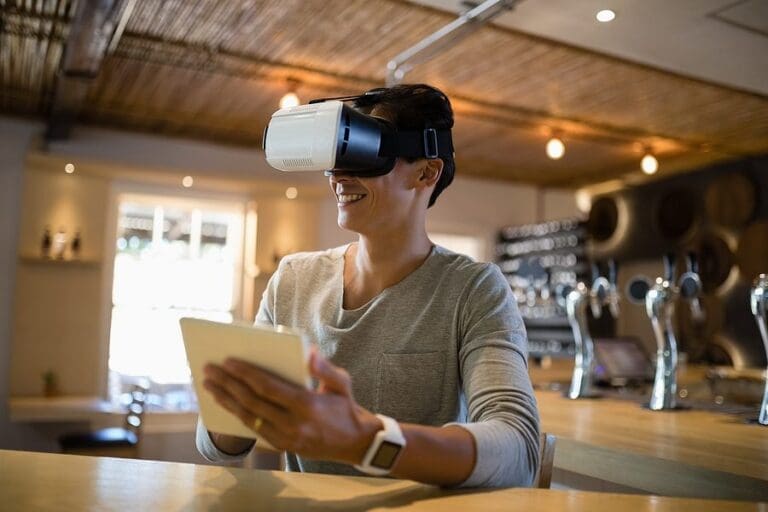 Virtual trips are destination “teasers” and a valuable way to attract new tourists. But what about returning tourists? Timely new research by Dr Hyejo Hailey Shin of the School of Hotel and Tourism Management (SHTM) at The Hong Kong Polytechnic University and a co-author offers an in-depth look at which elements of virtual trips are the most essential, and how these can be used to encourage returning tourists’ behavioural intentions via immersion and nostalgia. Intriguingly, stirring the emotions and nostalgia of returning tourists can boost their intention to revisit a destination, visit a similar destination and speak positively about travel experiences with others. These illuminating findings could prove vital for destination management organisations as the industry regains its footing in the wake of COVID-19.
Virtual trips are destination “teasers” and a valuable way to attract new tourists. But what about returning tourists? Timely new research by Dr Hyejo Hailey Shin of the School of Hotel and Tourism Management (SHTM) at The Hong Kong Polytechnic University and a co-author offers an in-depth look at which elements of virtual trips are the most essential, and how these can be used to encourage returning tourists’ behavioural intentions via immersion and nostalgia. Intriguingly, stirring the emotions and nostalgia of returning tourists can boost their intention to revisit a destination, visit a similar destination and speak positively about travel experiences with others. These illuminating findings could prove vital for destination management organisations as the industry regains its footing in the wake of COVID-19.
Virtual reality is widely considered one of the most exciting advances in the technological world, with a vast array of anticipated applications in various domains. This immersive technology allows users to vividly interact with computer-generated features in a simulated virtual environment, and so has attracted keen interest in the tourism sector. “Many tourism organisations have launched virtual trips, a combination of virtual reality and tourism contents, to promote themselves as a travel destination choice during the post-pandemic era”, say the researchers.
Virtual “previews” of destinations are often used to showcase previously unimagined travel possibilities and surprising locations to new tourists, while simultaneously assuaging their travel doubts. Nonetheless, despite these advantages for attracting first-time visitors, many tourism destinations’ primary targets are returning visitors who have already been to the destination in question. As the researchers note, “It would be ideal if tourism destinations could promote travellers’ positive feelings about their past memories in the destination in order to increase their revisit intentions”. This is where virtual reality could get a chance to shine.
For virtual trips to appeal to returning travellers, they need to evoke fond recollections of past travel adventures. For this, returning travellers need to feel fully immersed and involved. Building on previous work, the researchers hypothesised that better-quality interactivity, usability and sensorial appeal would increase immersion. They also predicted that more realistic representations of a destination would heighten immersion. This “authenticity” is all the more critical for returning travellers, who are bound to notice if a virtual trip does not match up with their actual experiences. Most crucially, true immersion in a virtual trip elicits an emotional response. “When travellers are deeply immersed, their emotional responses become stronger”, report the researchers.
Nostalgia is a person’s intense positive feelings about their own memories. Considering that travel is all about providing tangible experiences through which new memories are born, nostalgia naturally holds a special place in tourism research. Three types of tourist nostalgia are recognised in the literature: destination nostalgia; nostalgia for past lives and the desire to relive days gone by; and nostalgia for social activities, or the emotion surrounding travel memories of moments shared with others. The researchers predicted that all three types of nostalgia would be positively influenced by travellers’ immersion in a virtual trip. Moreover, “although these three types of nostalgia are directed towards different objects, they might occur simultaneously”, they say.
When considering the potential effects of nostalgia, a key concept is the well-known “stimulus–organism–response paradigm”. This posits that emotions compel a person to behave in a certain way, such that strong feelings sway responses to the environment. If so, a virtual trip should also have behavioural knock-on effects for travellers. “As an affective response, nostalgia has been considered an important antecedent of travellers’ behavioural intentions”, report the authors. For this reason, they tested whether nostalgia increased a tourist’s intention to revisit a destination, intention to visit a similar destination, and intention to share their memories of the destination with others. These are three critical indicators of travellers’ favourable attitudes towards a destination.
To address a final point of curiosity, the authors looked at whether tourists’ personalities played a role in the relationships between nostalgia and behavioural intentions. More self-confident and daring “allocentric” tourists might rather discover unchartered destinations than revisit a previous one, despite a strong sense of nostalgia. Less adventurous “psychocentric” tourists, who tend to prefer comfort and convenience, might be more inclined to revisit a familiar place, even if they do not feel particularly nostalgic on looking back. “Therefore, we investigated the moderating effect of travel personality in the relationship between nostalgia and future behavioural intention”, report the researchers.
What better study site than the theme park capital of the world? Sifting through travel records made available by the Orlando Destination Management Organisation, the researchers identified and contacted 303 individuals who had visited Orlando, Florida since 2015. These participants were invited to take a virtual trip via an Internet link and then complete a comprehensive survey compiled from previous publications. In this survey, the participants were asked to assess the interactivity, usability, sensorial appeal and authenticity of the virtual trip; their immersion in the trip; their felt nostalgia for the destination, past life and social activities; and their behavioural intentions. The authors also measured the participants’ travel “personality”, using an existing scale.
Immersion in the virtual trip was found to hinge on authenticity and sensorial appeal, which demonstrates the importance of including high-quality, representative content in virtual trips to intensify engagement and involvement. To get the most from revisiting tourists, tourism destinations should therefore devote energy to accurately portraying a destination’s atmosphere and including rich sensorial appeals. “By increasing travellers’ immersion in virtual trips”, explain the researchers, “[destination marketing organisations] will be able to arouse nostalgia for the destination, generating travellers’ intention to revisit the destination”. Indeed, immersion in the virtual experience significantly increased all three forms of nostalgia.
Destination nostalgia increased the intention to revisit the destination and to visit a similar destination, which indicates that virtual trips could be used to attract both returning and new tourists. For this reason, the researchers recommend that marketing strategies incorporate “coopetition” to create a win–win situation for destinations. “It would be beneficial to form a strategic alliance with destinations which share similar destination characteristics so that they can offer virtual trips to the destination and partner destinations to attract potential visitors”, they suggest. Destination nostalgia also increased the intention to spread positive word-of-mouth, which is a sure-fire way to attract potential visitors in the tourism industry.
Travellers’ behavioural intentions were not affected by the two other types of nostalgia, however. According to the authors, the nonsignificant effect of nostalgia for past lives/social activities is not necessarily unsurprising – tourists may not actually need to return to the same destination to re-experience their past lives or social activities. Finally, whilst destination nostalgia had a much stronger effect on revisit intention in psychocentric travellers, “even allocentric travellers were willing to revisit the destination after their virtual trip because of their nostalgia for the destination”, report the researchers. This is welcome news for destination marketing organisations.
These insights could inspire new ideas for channelling the skyrocketing significance of technology in the tourism sector. Virtual trips can invoke sweet, pleasant memories and thereby arouse nostalgia, which results in behavioural intentions that are ultimately beneficial for the tourism industry. However, the participants’ travel intentions were almost certainly affected by the COVID-19 travel restrictions imposed at the time of data collection. “As the travel restriction has continued, travellers’ intention to travel might be strengthened due to their reduced self-control”, acknowledge the researchers. “The findings could be different if there were no travel restrictions”. Certainly, never before have innovative tools to reboot the tourism industry been so urgently called for, further highlighting the important guidance provided by this research for destination marketing organisations.
About the authors
Shin, Hyejo Hailey and Jeong, Miyoung (2022). Does a Virtual Trip Evoke Travelers’ Nostalgia and Derive Intentions to Visit the Destination, a Similar Destination, and Share? Nostalgia-motivated Tourism. Journal of Travel & Tourism Marketing, Vol. 39, Issue 1, 1-17.




















